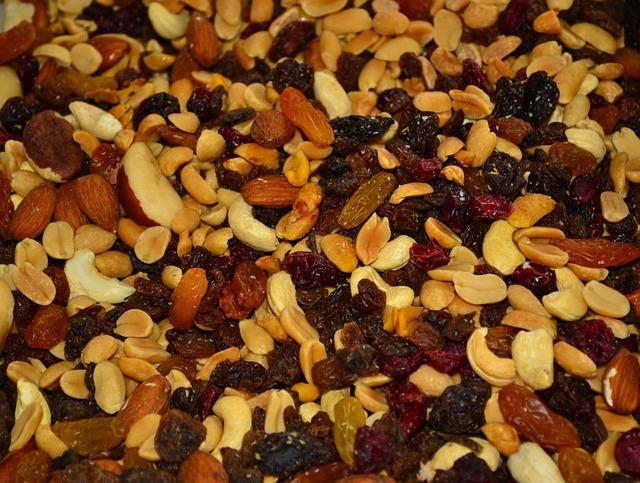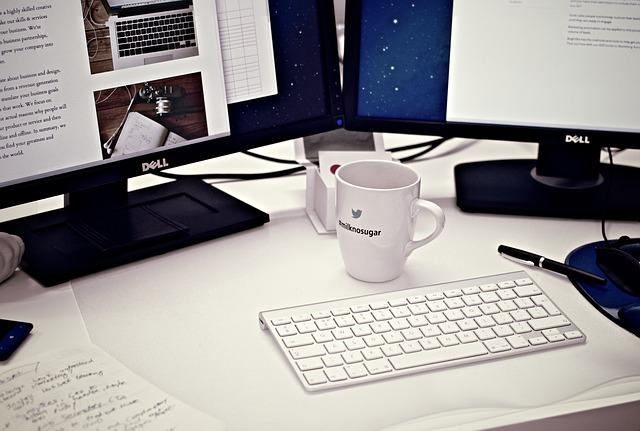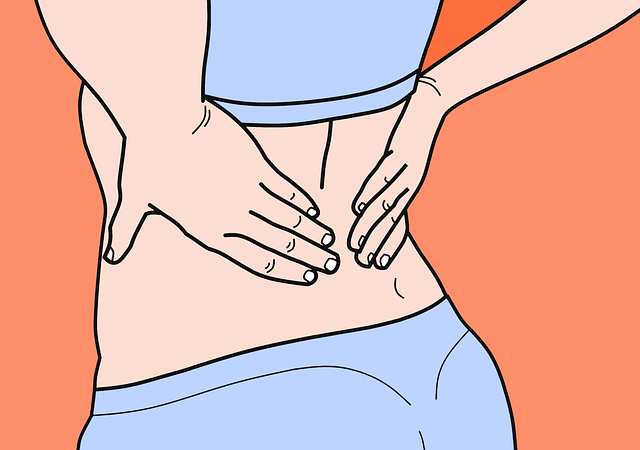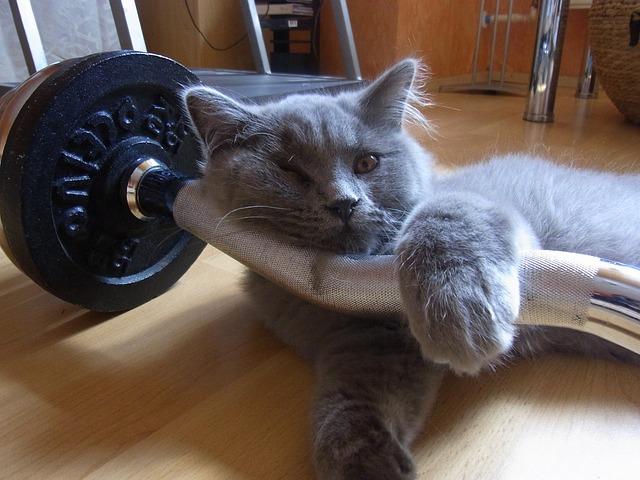Health and Wellness Blog
Prepping Food to Save Stress, Wallet and Waistline
When the going gets busy, the busy individual gets smart with their food habits!
When it comes to navigating a busy day, food often falls down the list of priorities; this is a shame because food is your fuel for those busy days. Food prep is time-consuming and therefore easy to cut out of your schedule completely, leading us to rely on ready-made or restaurant-made food in which we have no control over the ingredients. Prepping our meals beforehand offers the best of both worlds: control of ingredients and speed of delivery.
Time-honored tips that save your waist-line and your wallet
-
Plan and prep meals ahead of time: stews, soups, spaghetti; whatever your favorite recipe, take a few hours Sunday night to cook a large version of it then portion the foods into individual Tupperware.
-
Microwave: with the above preparation complete, each meal can be microwaved in under 90 seconds.
-
Slow cooking saves the day: for dinners, throw some ingredients in the crock pot with a bit of stock before you leave in the morning. Voila, a delicious, steaming hot healthy dinner awaits your arrival after work.
-
Use smoothies for breakfasting on the go: with a food processor, all the essential ingredients you need to get going can be blended together in about 30 seconds. Let’s get liquid with our breakfast habits.
-
Reduce booze intake: while quite a normal way to unwind after a busy day, too much booze is certainly going to hamper your sleep quality, and could contribute to your stress cycle even more.
Don’t let food fall by the wayside
This is the quickest way to let your body and, more importantly, brain down during a busy day. The simple fact is that skipping breakfast leaves you fatigued and anxious, causing you to gorge at lunch on potentially nutrient-deficient foods. With a little bit of prep time, you will be able to find the time to eat within your busy schedule and it will certainly make a difference in cognitive and bodily function! At Hayes Family Chiropractic, we believe in feeling good at all points of the day and nutrition is one of the ways you can best control your well-being from moment to moment.
Dr. Chris Hayes, D.C.
Snacks that Keep your Batteries Charged
Staying energized with snacks?
While we sleep, our body rests and fasts and this is why blood sugar levels often reach a low by 7 AM. Many of us wake up at this time and get going to be at work by 9. Say you are part of the minority who enjoys a balanced breakfast in the morning: by the time you’ve reached work and settled in for the day, you’ve already exerted yourself quite a bit, both physically and mentally. Blood sugar levels are often dipping around 10 AM and by the time lunch rolls around you are positively hangry- a feeling that results from low blood sugar.
Because low blood sugar makes us feel light-headed, anxious and hungry, we often reach for the easiest, quickest meal in an act of desperation. This is quite often a carb-overload that spikes our blood sugar and leaves us, again, fatigued even though we just ate. There must be some way around this madness! Snacking is a good solution for people who need to stay energized throughout the day.
Snacking done right
Snacking doesn’t deserve the bad rap it has in many wellness cicles. A properly timed snack will:
- Balance blood sugar levels
- Fend off hunger
- Prevent the release of stress chemicals
But what is snacking done right? We’ve come up with a checklist that can help you build a snacking plan:
- 150-200 calories
- A mix of carbs, protein, healthy fats
- No refined sugar or saturated fats
- Nutrient-density is important
With this criteria, the candy bar doesn’t look so substantial after all. But that doesn’t mean you can’t have chocolate! Here are some healthy snack ideas:
- Find your favorite trail mix and keep a bag at your office.
- Nut butter with an apple or banana.
- Yogurt parfait
- Quinoa based snacks
- Hard boiled egg with hummus
Even a perfectly timed peanut butter and jelly sandwich can save the day! Snacking is one of the best ways to stay energized throughout the day and keep stress at bay. Keeping energy up and stress down are two principles that align with the work we do as chiropractors- if you are suffering from chronic low energy levels, give our office a call to schedule an appointment today.
Dr. Chris Hayes, D.C.
Baby Stepping your Way to Fitness
“Fitness” is not going to happen overnight.
And what does fitness mean anyway? A ripped set of muscles or a killer beach body?
No, we think true fitness is a body with less pain and less weight to hold you back from doing things you truly love; a body that will prevent an old age full of difficulty and dysfunction. Any good fitness plan begins with realistic expectations so write down exactly what your fitness means to you and this will become your guiding light through the process ahead.
Start simple with a single habitual exercise.
This is our challenge to you:
- 10 push-ups a day done non-sequentially (eventually you’ll want to do them in a row) OR
- 10 sit-ups a day OR
- 20 minutes of recreational walking
…you get the idea. Challenge yourself! If you can do something once every single day, especially something that you like, your body and brain will begin to crave the endorphin release and you will start seeking out this activity as opposed to forcing yourself. From here, you build incrementally and we can help you put a plan in place to do just that. But it begins with changing the attitude toward movement.
Stop looking at fitness as intimidating
But do keep your expectations realistic- this may be one of the hardest things you do but the upside is tremendous! At Hayes Family Chiropractic, we know that getting fit is a tough business, but we’ve seen great success that starts with realistic expectations. That’s why we offer you our fullest support in keeping your body free of pain so that you can pursue and realize your greatest fitness dreams. Give our office in Dunedin a call to schedule an appointment today.
Dr. Chris Hayes, D.C.
The Technique of a Successful Sitter
Sitting is not the unconscious activity we give it credit for
It is much more insidious, contributing to obesity and risk for cardiovascular disease while simultaneously destabilizing the back, leading to pain and degeneration in your spine. And then you end up at the chiropractor’s office wondering where it all went wrong. Well, if you must sit all day, we must be proactive about it:
Ensure that your desk is not working against you
Here is an easy to follow ergonomics checklist.
- Top of your monitor at eye level. This encourages your head to stay straight; think about how you look down when the monitor is below eye level- this encourages your head to lean forward and down, and magnifies the weight of the head to the spine.
- Butt touching the back of the chair. This goes a long way toward keeping your back straight and upright. Use a pillow or rolled up sweater to provide support for the lower back.
- Hips at 90 degrees or slightly higher, with feet flat on the floor (or a footrest)
- Keyboard in line with elbow joint to prevent pains in the arms.
At Hayes Family Chiropractic, we believe in stacking the odds in your favor. By checking yourself against this list, you are making it a lot easier for your body to remain in a posture that is at least not actively damaging your spine. From here, it is about being attentive and proactive to moving as much as possible, whether it be at your desk or getting up and walking around.
At our office in Dunedin, we can show you the importance of posture and help think up creative solutions for your workplace. Posture is one of the best ways you can be preventative with your healthcare; let us help you redefine your attitude and reset your workplace by calling our office and scheduling an appointment today.
By checking yourself against this list, you are making it a lot easier for your body to remain in a posture that is at least not actively damaging your spine.
Deskercise: Sneaky Ways to Stay in Shape
Rethinking the way we exercise
Between working, commuting and relaxing, many of us are spending up to 70% of our waking hours seated! This is rough news for our bodies, particularly our backs and even people who make a pilgrimage to the gym after work still need to be wary of sitting for long periods of time without a break. If we are going to be spending so much time at the desk, we may as well use a few minutes to keep our bodies in a state of fitness. As chiropractors, we will focus on deskercises that target muscle groups of the core, the upper legs and hips, shoulders and necks.
Subtle deskercises for the discerning worker:
- Glute squeeze: Squeeze your glutes together and hold 5-10 seconds then release. Repeat as often as you want or until the glutes are tired.
- Sub-desk leg raising: while seated, straighten legs in the air and hold for 5-10 seconds. Let them down slowly and repeat up to 20 times or until you tire.
- Ab squeeze: tighten the abdominal muscles, hold for 5-10 seconds and release. Repeat 15 times.
- Using the swivel chair: Lift and hold your feet slightly off the ground. Grip the edge of your desk with thumb and forefinger and gently swivel from side to side to train the oblique muscles in your core.
- Shoulder shrug: Lift shoulders up toward ears, hold 5 seconds and let down slowly. Repeat. This one is great for releasing tension in the upper back and neck.
- Neck strengthening: Put your head in your hands and push. Engaging the muscles of the neck, resist. Then put hands on back of head and push, also resisting with the neck muscles. Hold each for 5 seconds and repeat up to 5 times.
None of these require you to get out of your chair, let alone make a buzz around the office by looking goofy. The emphasis should always be on movement; the more we can keep our muscles moving throughout the workday, the less tension will build. At Hayes Family Chiropractic, we help the deskbound worker by working with you to establish good posture as second nature- this is the single most important thing you can do if you must sit all day. Furthermore we treat sore muscles and nerve dysfunction in the spine with chiropractic adjustment.
Dr. Chris Hayes, D.C.
Brain Food: Keeping the Noggin Well-Nourished
Today, a subject that is certain to get the juices flowing: cerebral circulation.
What price can you place on your brain? It is the central processing unit for your entire world, and it is hungry! For an organ that makes up only about 2% of body mass, the brain uses more energy than any other organ- up to 20% of the body’s total, and three times as much oxygen as other muscles in the body. So we need to ensure that our brain is well-fed. But how?
It begins with blood
The blood vessels that supply the brain bring freshly oxygenated blood and other important nutrients, including glucose to the brain to help the cells respire and keep you energized and clear. This is what we call cerebral circulation: the flow of nutrients to the brain cells and then the flow of de-oxygenated blood, carbon dioxide, lactic acid and other metabolic products back to the heart.
Stagnation is the enemy of circulation
Breathing well is very important, as discussed in my last blog post here. But so are two other factors which seem to crop up time and again: diet and exercise. If you find yourself sitting for long periods of time, stand up and have a quick walk and a stretch to break the monotony of stagnation. When it comes to diet, the most important vitamins for the brain are of the b-complex and vitamin C, along with magnesium, zinc and calcium. Adding these into your diet, whether through supplement or in meals, is a great way to ensure your brain is receiving the nutrients it needs!
Above all, remain interested and active; make your brain work toward things that make you happy. The reward complex of the human brain is a powerful tool when used the right way! Chiropractic is another powerful tool for ensuring that circulation flows evenly through the body and brain. Give our office in Dunedin a call to schedule an appointment today.
Dr. Chris Hayes, D.C.
Deep Breathing to Beat Stress
In the heat of a stressful moment, deep breathing is a powerful tool.
There is so much wisdom in the saying, “take a deep breath.” But to go a step further we should try taking a full minute of deep breathing. In moments of panic, when stress is boiling over, our breathing tends to become shallow and insignificant. A signal characteristic of shallow breathing is expansion of the chest cavity. As I wrote about in our blog here, the elements of deep, diaphragmatic breathing are as follows: contracting the diaphragm, in-taking air through the nose and filling the lungs to the bottom, where blood is circulating. A signal characteristic of deep breathing is expansion of the abdomen and not the chest.
The benefits of deep breathing:
-
Cells of the brain and body receive a steady supply of oxygenated blood
-
The body is able to detoxify and release toxins easier
-
Blood circulates better
-
Blood pressure lowers
These are important factors in the fight against stress. Those benefits contribute to a sharper mind, less tension in the body and an elevated state of mind.
Another side effect of stress is tension in the muscles
Sitting for hours, typing and clicking and all the time tension is rising; you can feel it in your shoulders and lower back in particular. Here is a quick method for dispelling this tension: known as progressive muscle relaxation, it combines deep breathing with activation of the muscles to relieve tension.
- Start deep breathing, in for four seconds and out four rhythmically
- With each inhale, flex a different muscle group, starting with the toes and working up to the shoulders
- With each exhale, let go and then move to the next group.
This should see a marked improvement in stress relief both physically and mentally. At Hayes Family Chiropractic, we can help you manage the stress of your daily life. Deep breathing is a great way to start, but it is only the tip of the iceberg! Call our office in Dunedin to find out how we can optimize your body and brain in the fight against stress.
Dr. Chris Hayes, D.C.
How to Manage Back Pain in the Moment
Sitting all the time is the fastest ticket to back pain currently available.
As humans we were not meant to sit for nearly as much time as we do- but more and more of us are being asked to sit for 40+ hours a week, plus our commute and recreation time. Sitting is insidious by nature: it starts with just a twinge of spinal discomfort, but soon the muscles degrade and the twinges become more chronic. Back pain is a signal that tells you something is wrong and it should not be ignored! While chiropractic is an important tool for keeping your spine aligned and addressing chronic muscle tension, sometimes you need immediate relief, of the kind you can administer to yourself.
Techniques for managing back pain on the spot include:
-
Going for a quick walk: to relieve muscles from the monotony of sitting and release endorphins as well as get your heart rate up.
-
Static stretching: sometimes standing up and going for a walk isn’t good enough. Static stretches such as the hip flexor or standing quad stretch can be performed within your desk area and will help maintain the proper curvature of your low back.
-
Stretching the hamstrings: while not the first place you think when you’ve got back pain, a symptom of chronic sitting is tight hamstrings and these can create a pull on the lower back, meaning the pain is appearing in another place than its origin.
-
Releasing endorphins through light aerobic exercise. These are your natural pain-fighting chemicals which work by stopping pain signals from registering in your brain.
-
Simple yoga poses: child’s pose and pigeon pose are excellent for elongating the spine and opening up the hips.
Low back pain is likely going to reflect a multitude of issues. For example, tight hip flexors, quads and hamstrings are very likely to create a pull and thus a misalignment in the lower back. When this misalignment leads to nerve pain, it is time to pay a visit to your Dunedin chiropractor! Chiropractic adjustments will restore alignment to the lower back, alleviating nerve pressure and allowing you to stretch and strengthen the region effectively.
Dr. Chris Hayes, D.C.
Using your Hips to Fight Lower Back Pain
The problems facing your hips are myriad.
Let’s focus on how it relates to low back pain. As the largest joints in the human body, the hips are meant to support the weight of the human body during both static and dynamic (moving) posture. The entire region, known as the pelvis, contains the two hip bones which connect by way of muscles and ligaments to the sacrum to form the sacroiliac joint. Because there is a complex network of nerves which control muscles and organs in the local area, the sacroiliac region is prone to misalignment and painful nerve irritation.
Hip mechanics have gone out the window
It’s something that we all seem to “unlearn” at some point along the way to becoming an adult. We stop using our hips for motions such as lifting and twisting, and the lower back must perform this movement, which adds to its already considerable burden. For a basic lift, we all know that we are supposed to squat down to the object, then thrust forward with the hips to initiate the lift. But in our infinite laziness, we often forego this motion and just bend over to pick up and object. This sets a trend for many motions in which the lower back is unfairly asked to pick up the slack of the hips.
Hip mobility also faces problems due to excess sitting: when we are sedentary all day, the many muscles in the hip region are conditioned to remain contracted. This leaves them vulnerable to injury when we ask them to do basic elongating movements such as walking or running.
The clear truth is that using your hips properly can help fight lower back pain.
At Hayes Family Chiropractic, we want to help you relearn what was lost- by teaching you about proper body mechanics and when to apply them, you can stop overburdening your lower back. Furthermore, we can provide relief to those tight hip muscles and realign the lower spine to prevent nerve irritation from affecting you further. By adhering to proper body mechanics, stretching and strengthening the right muscles, you can go a long way toward preventing degenerative joint disease and other problems in the lower back!
Dr. Chris Hayes, D.C.
The Hype about Micro-exercising
Micro-exercise is the idea that you can capture great health benefits from small doses of workout
How do we define the value of 60 seconds? 10 minutes? Certainly these small blocks of time can be measured in terms of productivity, but what about in terms of the benefit to brain and body? All across America workers are saying (whether honestly or not) “we don’t have enough time to exercise.” On the flip side, your brain and body can’t afford not to exercise. Micro-workouts offer an exciting go-between that allows people to take advantage of small blocks of time throughout the day when they don’t have the time for a full work out. It is certainly tipped to become one of the great health trends in 2017.
Why do it? Microexercise:
-
Gets your heart rate up and blood flowing
-
Recharges brain and body before returning to work
-
Trains muscles that matter for posture
-
Relieves muscles from the monotony of sitting for hours on end.
-
Encourages the elongation of muscles which are being conditioned into a state of constant contraction.
Micro-workouts should serve a purpose
They should not take the place of a full workout routine, or become your only method of exercise. They should be used on days when you can barely escape the office; when you wake up feeling gym-shy or unable to move yourself to run. Micro-exercise is more along the lines of keeping a jump rope or a set of dumbbells under your desk so that when the opportunity strikes, you can seamlessly jump into a work out. A set of jumping jacks, push ups or lunges should be done thoroughly- it is worth following a 10 minute full-body yoga or Pilates plan.
Micro-exercise, like chiropractic, is about optimization.
The science is overwhelmingly in support of exercise for people who spend significant amounts of time deskbound. At Hayes Family Chiropractic, we support any initiative that gets your body moving during a day of heavy sitting. Give our office a call so we can start working together to create a plan for your fitness that keeps you free of the tension and dysfunction that accumulates from hours spent stationary.
Dr. Chris Hayes, D.C.









